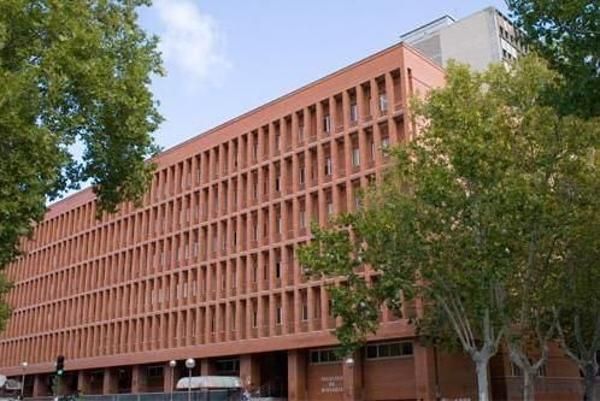Ciencias Biológicas
Fakultatea


Swiss Federal Institute of Technology in Zurich
Zúrich, SuizaSwiss Federal Institute of Technology in Zurich-ko ikertzaileekin lankidetzan egindako argitalpenak (72)
2024
-
Aridity-dependent shifts in biodiversity–stability relationships but not in underlying mechanisms
Global Change Biology, Vol. 30, Núm. 6
-
Correction to: Hotspots of biogeochemical activity linked to aridity and plant traits across global drylands (Nature Plants, (2024), 10, 5, (760-770), 10.1038/s41477-024-01670-7)
Nature Plants
-
Hotspots of biogeochemical activity linked to aridity and plant traits across global drylands
Nature Plants
-
Increasing numbers of global change stressors reduce soil carbon worldwide
Nature Climate Change, Vol. 14, Núm. 7, pp. 740-745
-
Land use determines Mediterranean ecosystems' multifunctionality more than plant richness or habitat composition
Journal of Applied Ecology, Vol. 61, Núm. 3, pp. 476-488
-
Positive feedbacks and alternative stable states in forest leaf types
Nature Communications, Vol. 15, Núm. 1
-
Unearthing the soil-borne microbiome of land plants
Global Change Biology, Vol. 30, Núm. 5
-
Unforeseen plant phenotypic diversity in a dry and grazed world
Nature, Vol. 632, Núm. 8026, pp. 808-814
-
Urban greenspaces and nearby natural areas support similar levels of soil ecosystem services
npj Urban Sustainability, Vol. 4, Núm. 1
-
Vegetation fine-tunes aridity thresholds in soil biodiversity and function worldwide
Plant and Soil
2023
-
Biogenic factors explain soil carbon in paired urban and natural ecosystems worldwide
Nature Climate Change, Vol. 13, Núm. 5, pp. 450-455
-
Ecological drivers of fine-scale distribution of arbuscular mycorrhizal fungi in a semiarid Mediterranean scrubland
Annals of botany, Vol. 131, Núm. 7, pp. 1107-1119
-
Gender bias in ecosystem restoration: from science to practice
Restoration Ecology, Vol. 31, Núm. 4
-
Global monitoring of soil multifunctionality in drylands using satellite imagery and field data
Remote Sensing in Ecology and Conservation, Vol. 9, Núm. 6, pp. 743-758
-
Increasing the number of stressors reduces soil ecosystem services worldwide
Nature Climate Change, Vol. 13, Núm. 5, pp. 478-483
-
On the relative importance of land use, landscape characteristics, bird and plant assemblages as drivers of Mediterranean ecosystem functioning
Landscape Ecology, Vol. 38, Núm. 12, pp. 3605-3619
-
On the relative importance of resource availability and habitat connectivity as drivers of soil biodiversity in Mediterranean ecosystems
Journal of Ecology, Vol. 111, Núm. 7, pp. 1455-1467
-
Plant size, latitude, and phylogeny explain within-population variability in herbivory
Science (New York, N.Y.), Vol. 382, Núm. 6671, pp. 679-683
-
Soil biodiversity supports the delivery of multiple ecosystem functions in urban greenspaces
Nature Ecology and Evolution, Vol. 7, Núm. 1, pp. 113-126
-
Soils in warmer and less developed countries have less micronutrients globally
Global Change Biology, Vol. 29, Núm. 2, pp. 522-532